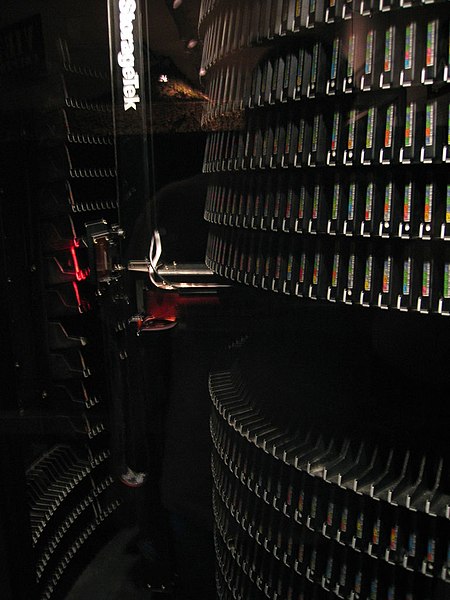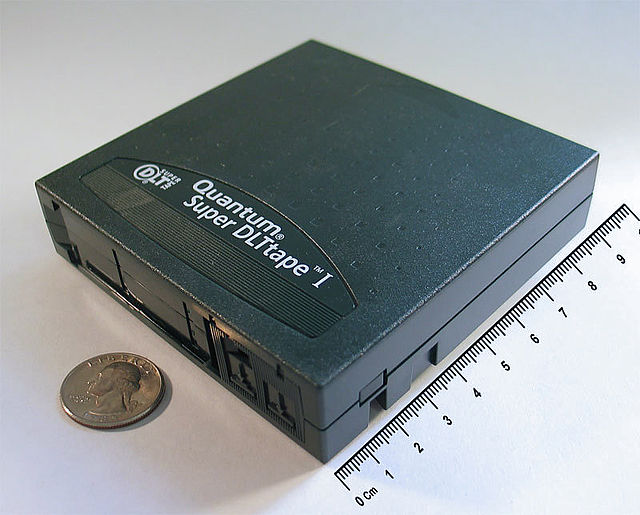In computer storage, a tape library is a physical area that holds magnetic data tapes. In an earlier era, tape libraries were maintained by people known as tape librarians and computer operators and the proper operation of the library was crucial to the running of batch processing jobs. Although tape libraries of this era were not automated, the use of tape management system software could assist in running them.
A manual magnetic tape library, common in the 1960s and 1970s. Rolling carts are used by staff to transfer tapes between the racks in the library and the computer room where the tape drives reside.
Tape Retention / Scratch Control form, in triplicate
Large StorageTek Powderhorn tape library, showing tape cartridges with barcodes packed on shelves in the front and a robot arm moving in the back
Small ADIC Scalar 100 tape library, showing a robot visible on the bottom with two IBM LTO2 tape drives behind it
Computer data storage or digital data storage is a technology consisting of computer components and recording media that are used to retain digital data. It is a core function and fundamental component of computers.
1 GiB of SDRAM mounted in a computer. An example of primary storage.
15 GB PATA hard disk drive (HDD) from 1999. When connected to a computer it serves as secondary storage.
160 GB SDLT tape cartridge, an example of off-line storage. When used within a robotic tape library, it is classified as tertiary storage instead.
Read/Write DVD drive with cradle for media extended








